100 famous castles in Japan
Curated by @travelog
Japan's historic castles have woven countless stories and legends over the centuries. The "100 Famous Castles of Japan" is a curated list featuring castles that are particularly captivating and of high historical value. With their grand donjons, beautiful stone walls, and expansive castle towns, each castle offers a unique charm that deeply moves its visitors. Whether you're a history enthusiast or a travel lover, join us as we explore these remarkable castles that are a must-visit for anyone wanting to experience Japan's rich heritage.



Goryokaku (No. 2 among Japan's Top 100 Castles) is a castle located in Hakodate, Hokkaido. Its distinctive feature is the star-shaped fortress with five bastions. It is one of the two Goryokaku castles in Japan. When the policy of national seclusion by the Edo Shogunate collapsed due to the arrival of Commodore Perry, the decision to open the port of Hakodate led to the reestablishment of Hakodate Bugyosho for surveillance and the formation of government offices and urban areas. However, concern... Show more

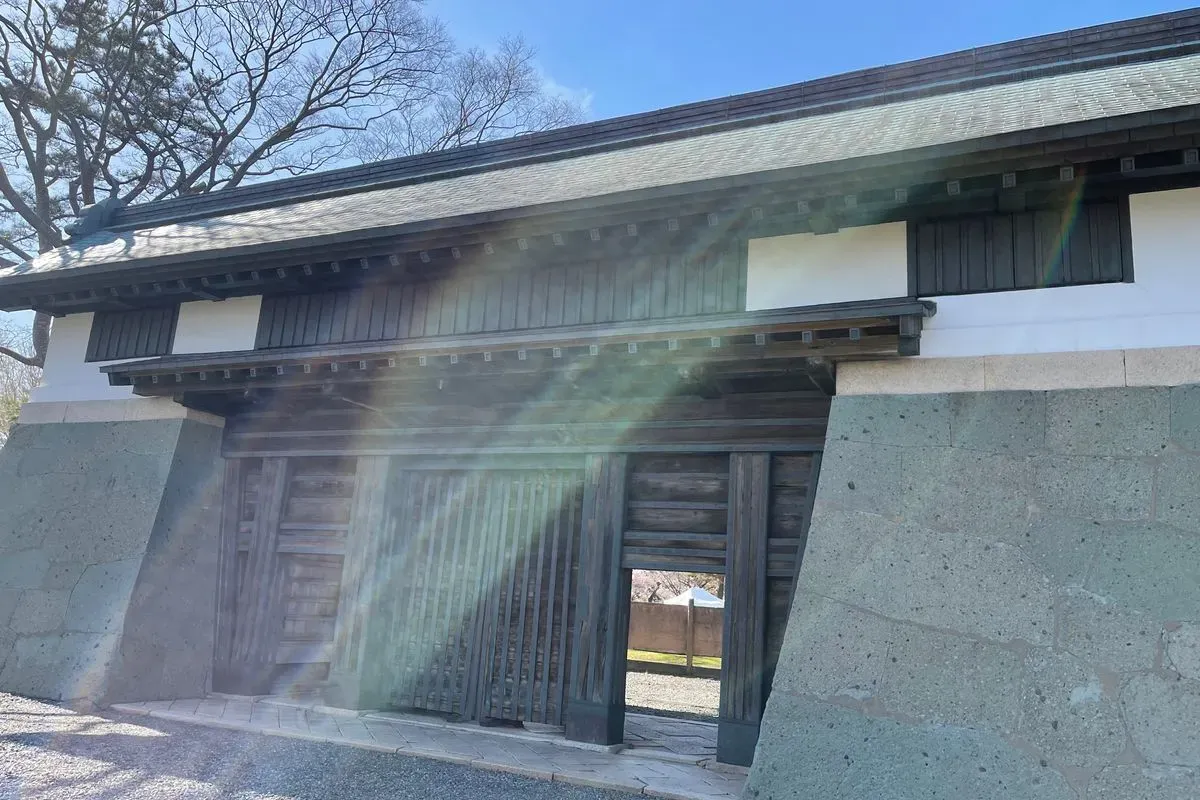

Matsumae Castle (No. 3 among Japan's Top 100 Castles) is a castle located in Matsumae Town, Hokkaido. Originally, it was the Fukuyama Mansion where the Matsumae clan resided during the Edo period, and it was known as the Matsumae Domain. As the Meiji era dawned and the end of the country's isolation led to the need for coastal defense against foreign vessels, the Fukuyama Mansion was renovated into a modern castle and became Matsumae Castle. Although the castle tower was designated a national tr... Show more

Ne Castle (No. 5 in Japan's Top 100 Castles) is a castle located in Hachinohe City, Aomori Prefecture. It is said to have been built by Nanbu Nobuhiro during the Nanboku-cho period, and it is a flatland castle with a series of five enclosures (kuruwa) consisting of the main enclosure, Naka-yakata, Tozen-ji, Okamae-yakata, and Sawazato-yakata. Currently, three enclosures including the main enclosure, Naka-yakata, and Tozen-ji remain. Although the castle itself was largely destroyed during Toyotom... Show more

On the premises, there is a place that used to be a medicinal herb garden, and nandina is planted there.

Currently, it is being used as a public square for citizens at the historical site of Ne Castle. It's about a 20-minute bus ride from Hachinohe Station.



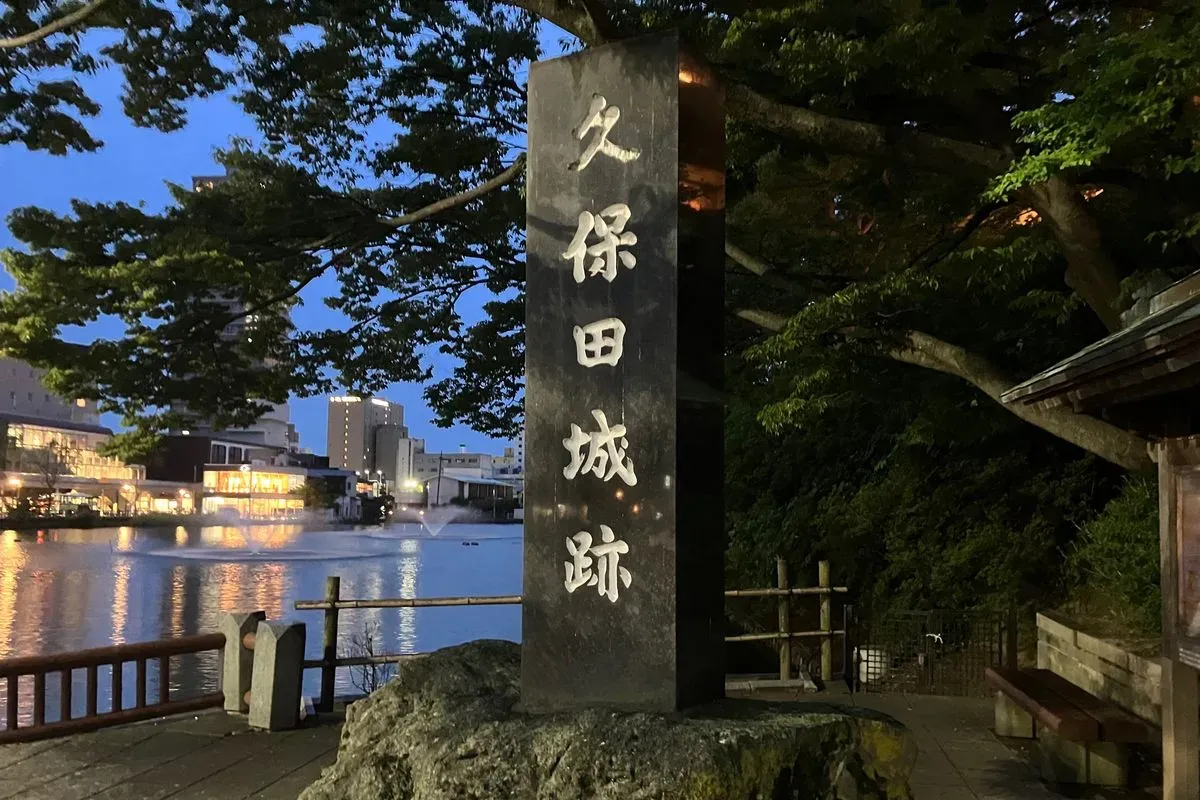
Kubota Castle (No. 9 of Japan's Top 100 Castles) is a castle located in Akita City, Akita Prefecture. The Chitose Park where Kubota Castle is located has also been selected as one of Japan's top 100 cherry blossom viewing spots. During the Edo period, Satake Yoshimune, who became the first lord of the Kubota domain, was transferred to this area and built the castle. There were several fires in the main enclosure, resulting in the loss of the palace, particularly in the later part of the Edo peri... Show more

Memories of my trip to Sendai. The equestrian statue of Date Masamune was so cool!

The Omote-mon Gate and the former Ninomaru Sumiyagura (corner turret) remain in their original state and are designated as National Important Cultural Properties of Japan. In addition, the "Tatsumi Yagura" as well as the "Sankai Yagura," which is considered to be the actual castle tower, have been restored and have been selected as one of the 100 best castles in Japan. The three-story turret, the only one of its kind in the country with a chôgi-shaped roof and three orcas, is on the grounds of... Show more




Hirosaki Castle (No. 4 among Japan's Top 100 Castles) is a castle located in Hirosaki, Aomori Prefecture. It is one of the existing main towers and has been selected as one of Japan's top 100 cherry blossom viewing spots. Hirosaki Castle's history began when Tamenobu Ōura, who had been a vassal of the Nanbu clan, received a land grant from Toyotomi Hideyoshi and established independence in this area. Tamenobu, who fought on the Eastern Army's side in the Battle of Sekigahara, became the first lo... Show more


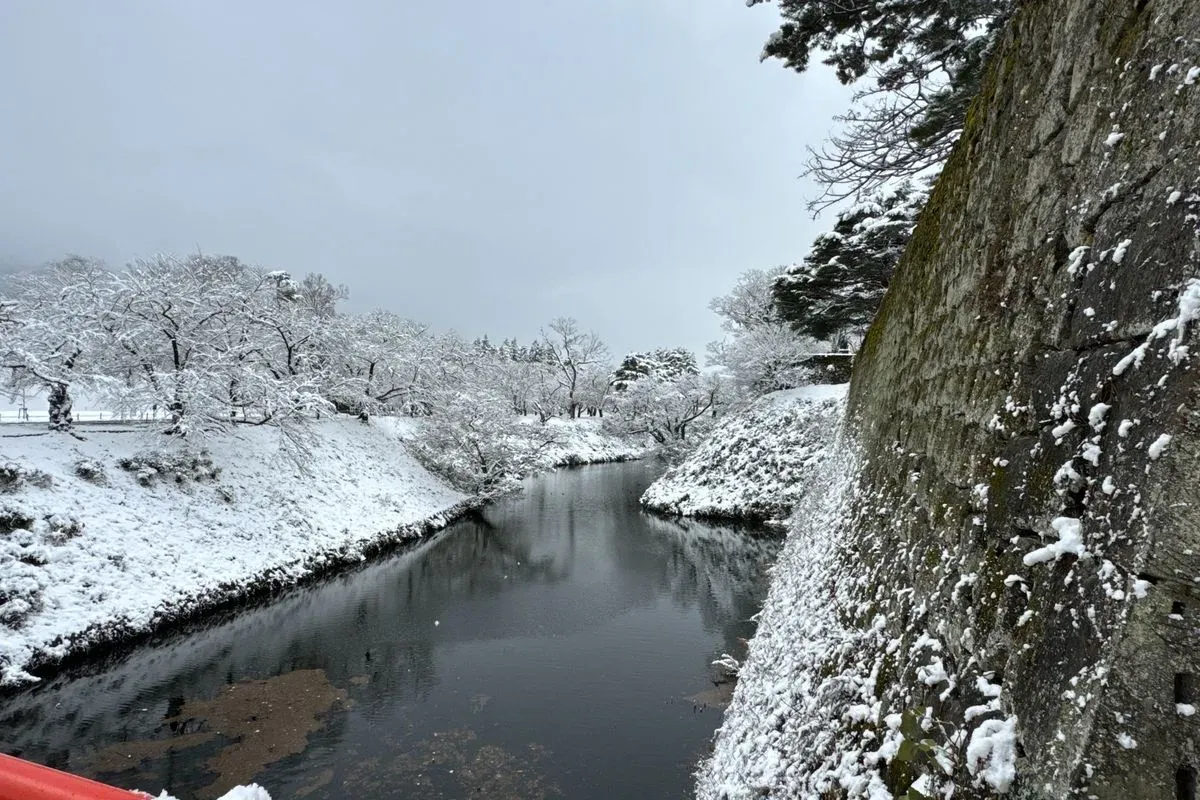
Tsurugajo (Aizu Wakamatsu Castle, No. 12 on the list of Japan's 100 famous castles) is a castle located in Aizuwakamatsu City, Fukushima Prefecture, Japan. Originally, this area was ruled by the Uesugi clan as Kurokawa Castle. After the Uesugi clan was destroyed by Date Masamune, it came under the control of the Date clan, but was soon confiscated by Toyotomi Hideyoshi. Later, the lord of the castle, Kamo Iigusa, changed the place name from Kurokawa to Wakamatsu and rebuilt the castle itself int... Show more


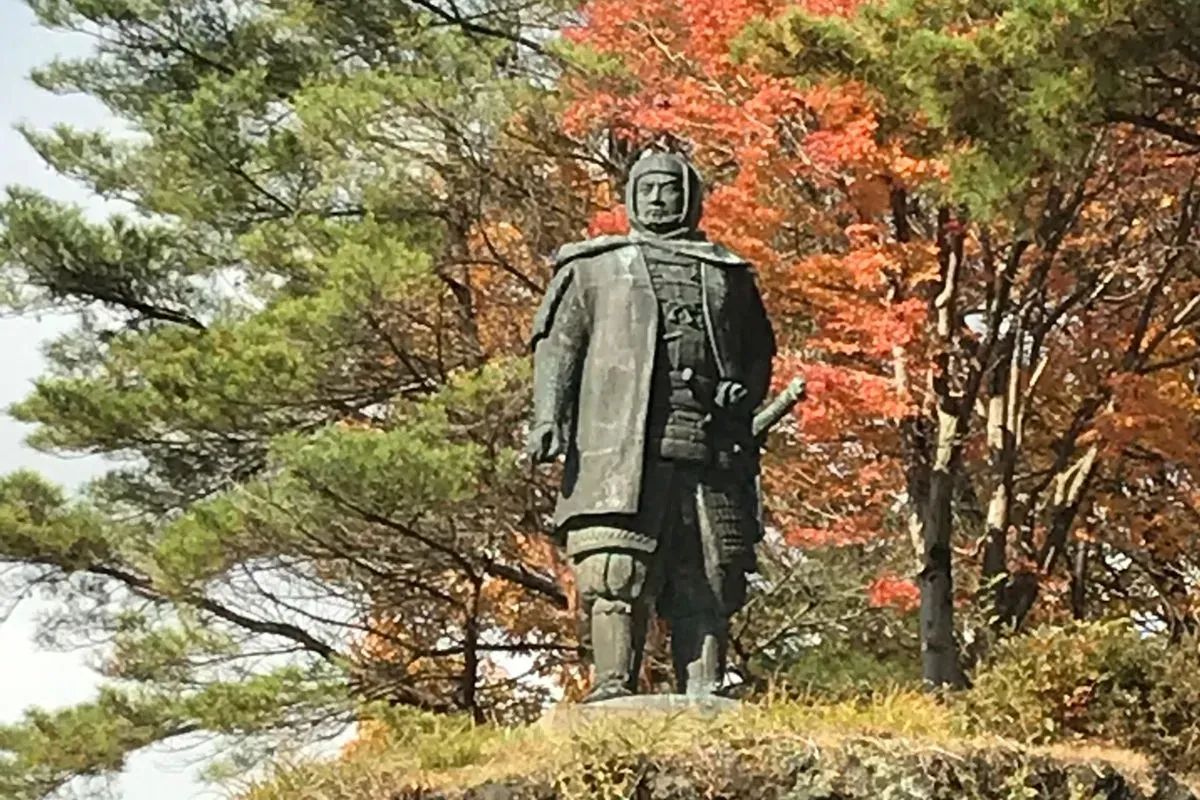
The well-known castle of Uesugi Kenshin, the dragon of Echigo. It takes less than an hour to climb from the foot of the mountain to the main enclosure. As you climb from the foot to the main enclosure, you will experience the impregnability of this castle. Narrow paths, steep cliffs, and numerous baileys to navigate... There are also large wells sufficient for a siege. The view from the main enclosure is also breathtaking, offering a panorama from Naoetsu Port to the city of Joetsu. Descriptions... Show more


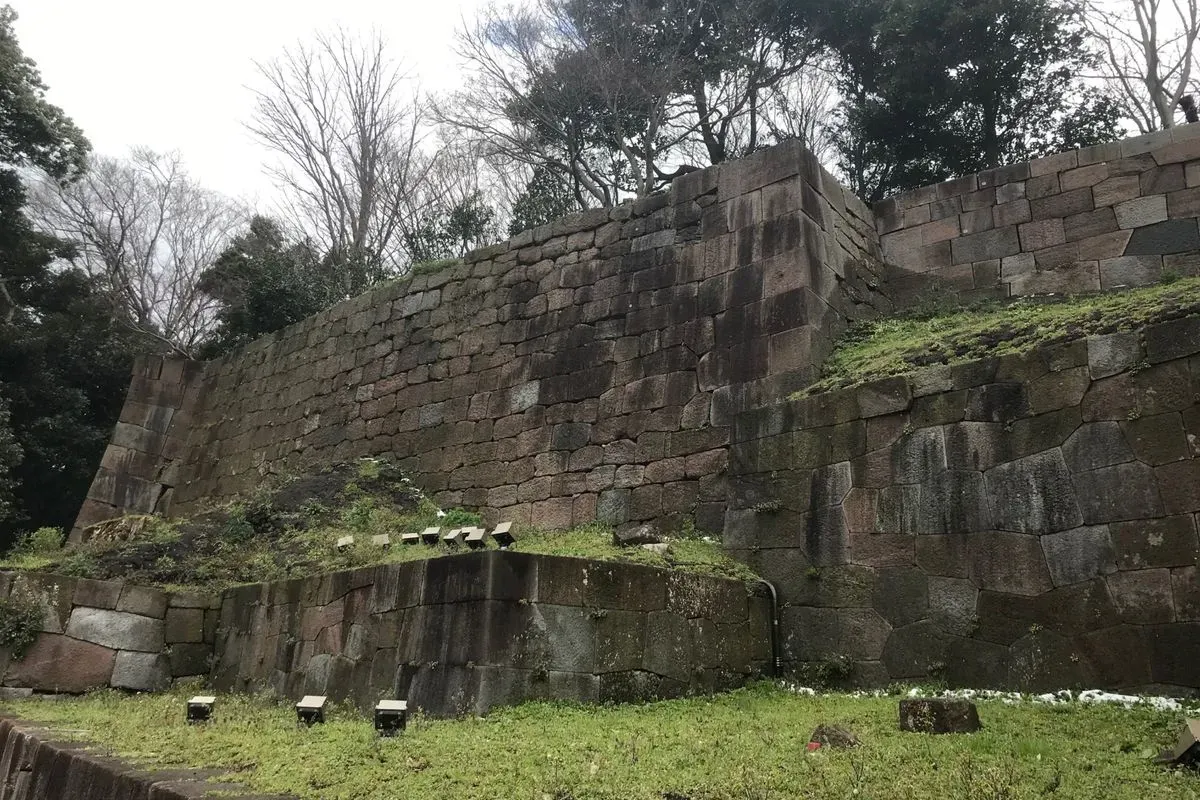
The castle of the Kaga domain. It is built to be worthy of the name of Kaga's 1 million koku, with distinctive features such as the characteristic outer wall called namako-kabe and the karahafu attached to the turret wall. It can be said to be a museum of stone walls, where you can see various ways of stacking such as namimomi, uchikometsuke, and kirikometsuke. We would like you to pay attention not only to the buildings but also to the way the stone walls are stacked. It is also a characteristi... Show more
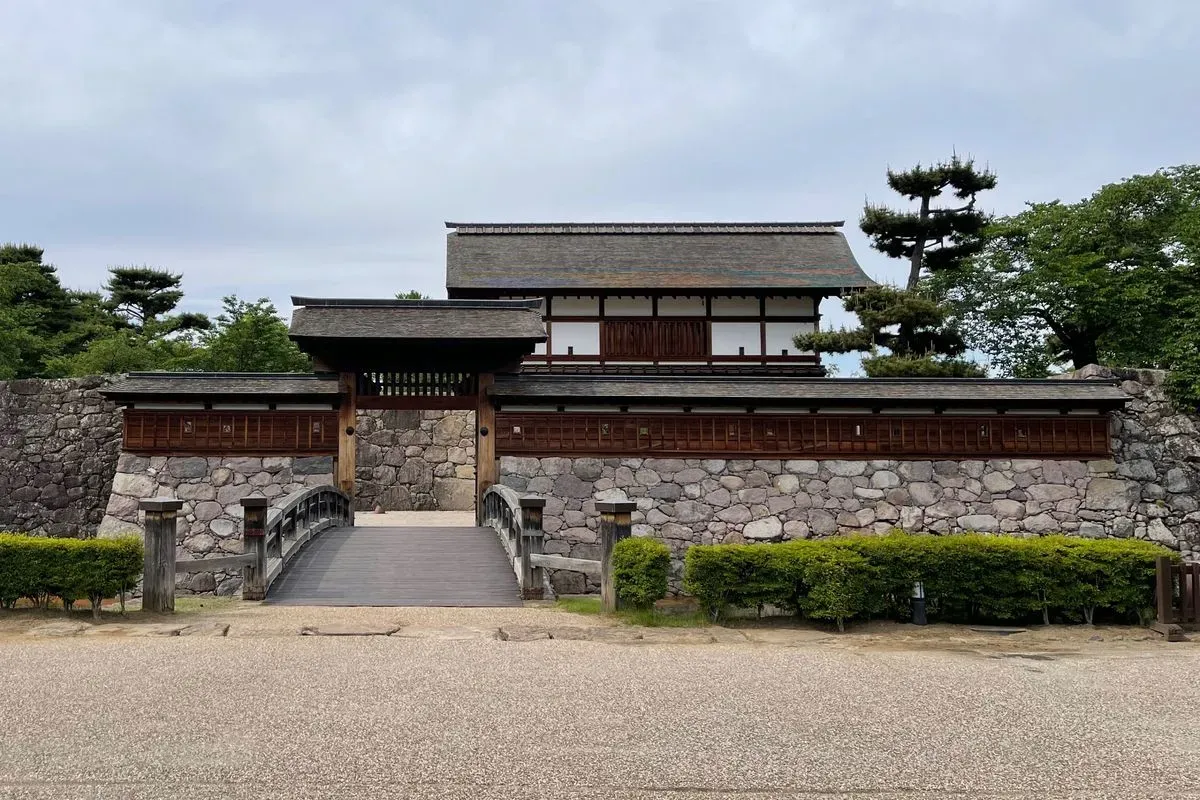


Matsumoto Castle (one of Japan's Top 100 Castles, No. 26) is a castle located in Nagano City, Nagano Prefecture. It was built by Takeda Shingen during the battles of Kawanakajima in the Warring States period and was then known as the Kaitz Castle. After the fall of the Takeda clan, it became the residence of Oda vassal Mori Nagakazu. In the Edo period, Kaitz Castle was renamed to 'Matsumoto Castle.' Later, Sanada Nobuyuki, who sided with the Eastern Army in the Battle of Sekigahara after the Sak... Show more




Ueda Castle (Japanese Top 100 Castles No. 27) is a castle located in Ueda City, Nagano Prefecture. Ueda Shrine is located within the castle. In the late Sengoku period, the Sanada clan built the castle and moved from the Sanada main castle. Ueda Castle achieved victory in two battles against the Tokugawa clan, the first Ueda battle during the Tensho-Mingo Rebellion, and the second Ueda battle with the forces of Tokugawa Hidetada en route to the Battle of Sekigahara. Ueda Shrine within the castle... Show more



Mito Castle (one of Japan's Top 100 Castles, ranked 14th) is a castle located in Mito City, Ibaraki Prefecture. It is said to have been built during the Heian period. The Oo clan ruled the castle in ancient times, and later the Edo clan ruled it for a long time. During the Sengoku period, it became the base of Satake Yoshishige, but after the Battle of Sekigahara, it was transferred to present-day Akita Prefecture. In the Edo period, it was inherited by Tokugawa Ieyasu's fifth son, Takeda Nobuyo... Show more




Matsumoto Castle (Japanese Top 100 Castles No. 29) is a castle located in Matsumoto City, Nagano Prefecture. It is one of the remaining towers and one of the five national treasure towers. Originally known as Shimoshi Castle, it was first built by the Ogasawara clan. Later, it came under the control of the Takeda clan, with Baba Nobuharu entering the castle. After the fall of the Takeda clan, the Ogasawara clan recaptured their former territory and renamed the castle to Matsumoto Castle. The cur... Show more



Takato Castle (No. 30 of Japan's Top 100 Castles) is a castle located in Takato, Ina District, Nagano Prefecture. The Takato clan, a branch of the Suwa clan, initially served as the castle lord, but later, a senior retainer of the Takeda clan, Toramasa Akiyama, became the lord. Subsequently, when Takeda Katsuyori succeeded the Suwa clan, he became the lord. After Takeda Yoshinobu was disinherited, Katsuyori's uncle, Takeda Nobuchika, became the lord, and before the conquest of Kai, Katsuyori's h... Show more



Sakura Castle (Japan's Top 100 Castles No. 20) is a castle located in Sakura City, Chiba Prefecture. Sakura Castle was attempted to be built twice by the Chiba clan during the Warring States period, but both attempts were thwarted by the assassination of the lord who ordered the construction of the castle. In the Edo period, it was finally built by Tsuchiya Toshikatsu in the name of Tokugawa Ieyasu. Many individuals who became lords of Sakura later held important positions in the shogunate, henc... Show more




Takeda Shrine (Tsutsuji-ga-saki Castle: No. 24 in Japan's Top 100 Castles) is a shrine located in Kofu City, Yamanashi Prefecture. It is the location where the Takeda clan, including Takeda Shingen, ruled for three generations, starting from Takeda Shingen. Tsutsuji-ga-saki Castle was built by Takeda Shingen in 1519. Even after the fall of the Takeda clan, it remained the political center for the daimyo who held control over Kai Province. It is also known as the birthplace of Takeda Shingen, wit... Show more


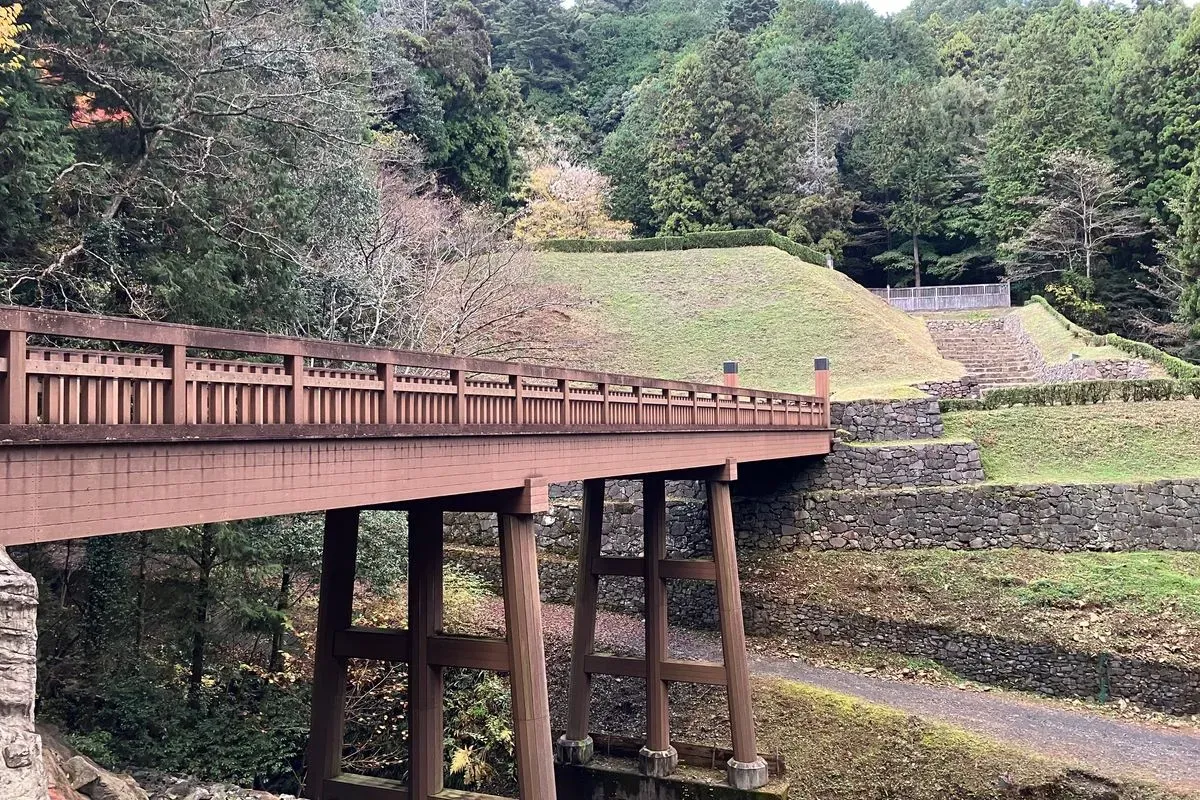

Hachioji Castle (No. 22 of Japan's Top 100 Castles) is a castle located in Hachioji City, Tokyo. It was built by Hojo Ujiteru as a military base on the western side of the Kanto region. During the Odawara Conquest in 1590, 2,000 people defended the castle, but they were overwhelmed by the overwhelming force of the Toyotomi army, which included numerous daimyo, resulting in over half of the defenders perishing. Legend has it that the women and children of the Hojo clan at the lord's residence thr... Show more

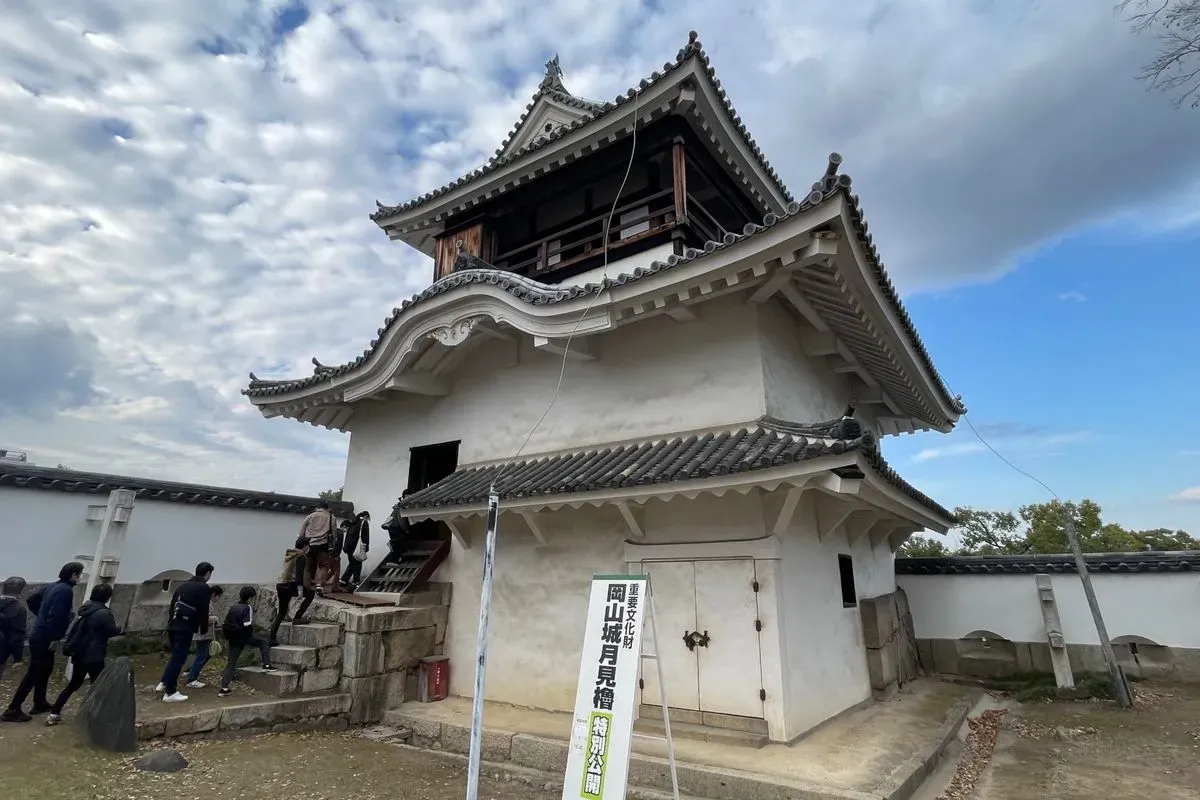

Okayama Castle was the residence of the Ukita clan during the Sengoku period. After the Battle of Sekigahara, the Kobayakawa clan took over, and then the Ikeda clan ruled until the end of the Edo period. The transformation of the current castle structure occurred during the transition from the Kobayakawa period to the Ikeda period. The castle town still retains its old charm, making it enjoyable to explore the historical roads and more. The majestic black-lacquered tower, also known as the Crow... Show more

Hikone Castle is one of the five remaining castles designated as national treasures. Construction began in 1604 during the Keicho era. It took about 20 years to build the castle by cutting through Mt. Hikone, which stands at an elevation of 136 meters. Until the Sengoku period, the main stronghold in Omi Province was Sawayama Castle. However, because Sawayama Castle was ruled by Ishida Mitsunari, a key vassal of Toyotomi Hideyoshi, Tokugawa Ieyasu, who wanted to eliminate the influence of the To... Show more

100 Famous Castles in Japan Built in 1615 (Keicho 20) by Tokugawa Ieyasu. It is a famous castle designated as the first national treasure as a castle with the function of a fortress with a golden shachihoko, a large donjon with the largest floor area in history, and a luxurious honmaru palace. Even after being destroyed by war damage, it has been designated as a special historic site of the country, and the restored honmaru palace conveys its former appearance. Although it is currently not poss... Show more




Ako Castle (Japanese Top 100 Castles No. 60) is a castle located in Ako City, Hyogo Prefecture. Ako Castle was built by the daimyo Asano Naganao in the early Edo period and is widely known as the stage of the Chushingura (The Treasury of Loyal Retainers). When Asano Naganori served as the feudal lord, he attacked Kira Kozuke-no-suke within Edo Castle and was later ordered to commit seppuku. As a result of this incident, his retainers left the Ako domain to avenge their lord and successfully carr... Show more
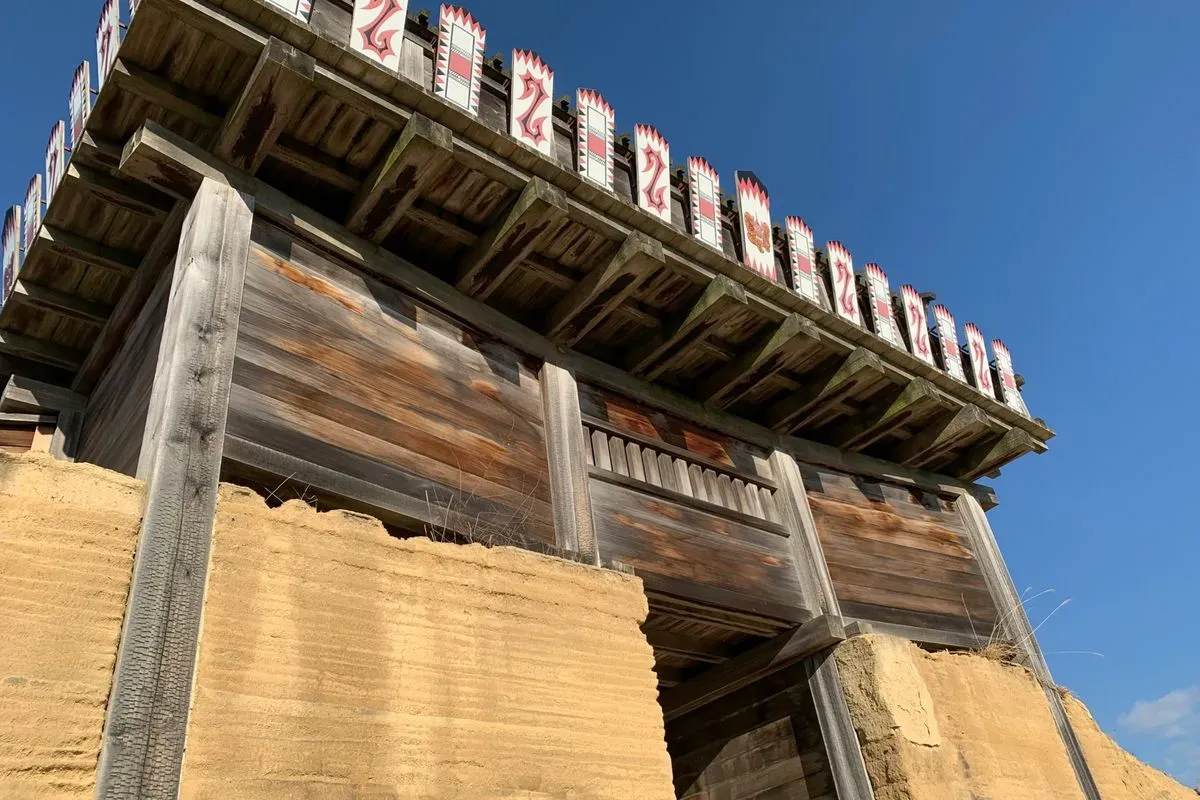


Oni no Jo is an ancient mountain castle located in Sōja City, Okayama Prefecture. It is said to have been built around the 7th century, and remains such as gates, corner towers, stone walls, earthen walls, water gates, and paving stones can be seen. The west gate has been reconstructed. Perhaps the most visible remains are the 'banked earth walls,' which are earthen walls built by compacting and layering soil. On a clear day, the view of the Kibi Plain from Oni no Jo is breathtaking. Stamps are... Show more

Osaka Castle is really cool after all.

A castle located in Matsue City, Shimane Prefecture. It is one of the twelve remaining castles with a donjon, and also one of the national treasure donjons. It was completed in the early Edo period, and its structure reflects the ingenuity in dealing with the shortage of wood due to the nationwide rush of castle construction. In addition to being a popular cherry blossom viewing spot, there are surprising anecdotes such as the former presence of a thermal power plant within the castle. Spots rel... Show more
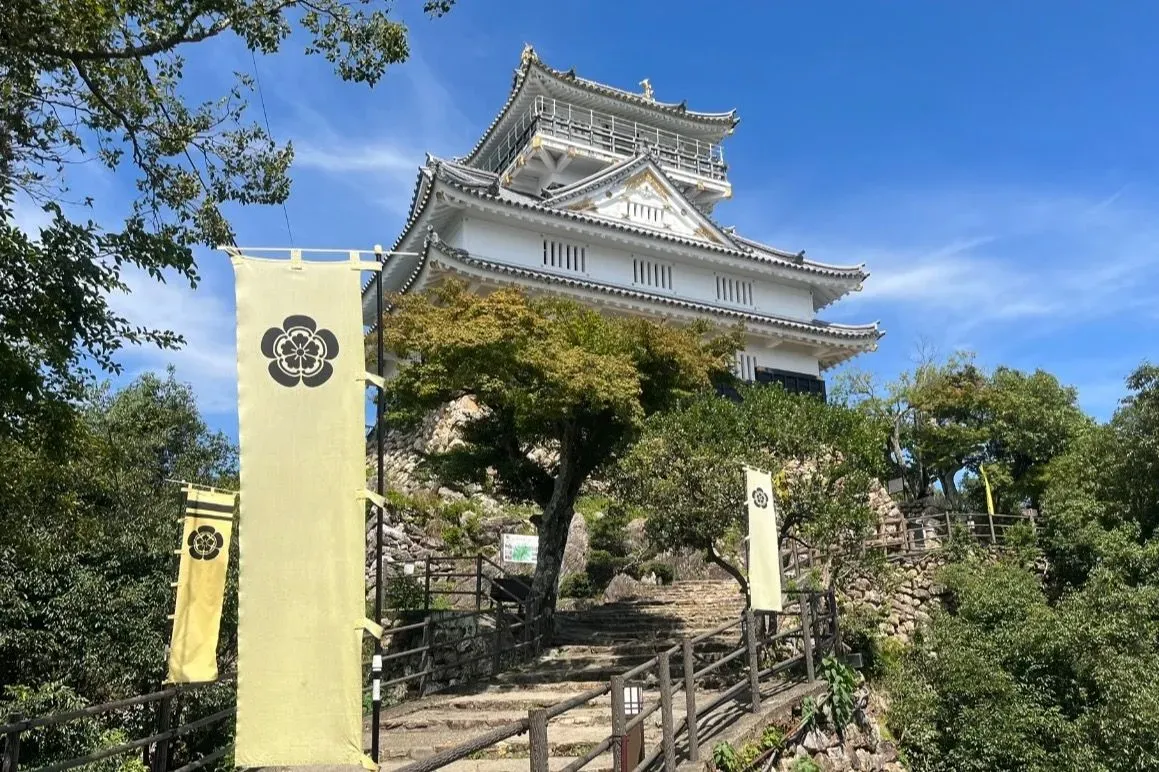
Japan's 100 Famous Castles Known as the place where Oda Nobunaga began to move towards unifying the country. Gifu Castle, before Nobunaga ruled, was called Inabayama Castle and was the residence of Saito Dozan who controlled Mino Province. After Nobunaga defeated Dozan and changed the surrounding place names to Gifu, it came to be called Gifu Castle. You can hike or take a ropeway to the restored castle tower. Along the way to the tower, there are stone walls and well remains. There are also re... Show more
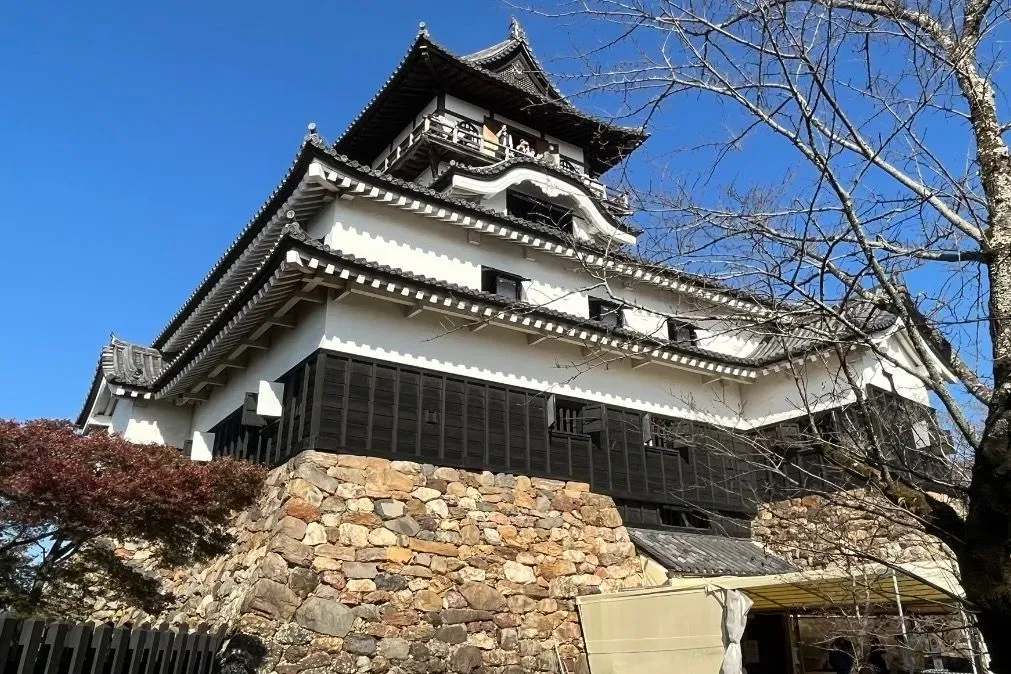
100 Famous Castles in Japan One of the 12 remaining tenshu (keeps), and one of the 5 castles with a tenshu designated as a national treasure. Designated as a national historic site. Built by Oda Nobuyasu, uncle of Oda Nobunaga, in the 6th year of Tenbun (1537). The oldest remaining wooden tenshu in Japan. Historically significant as a castle where Nobunaga, Hideyoshi, and Ieyasu each took control, paving their way to becoming rulers of the land. The view from the top floor of the existing tensh... Show more

Japan's 100 Famous Castles. This mountain castle was built in the medieval period and is one of Japan's three greatest mountain castles. Built in the mountains at an elevation of 717 meters, this castle is also known as the 'Castle in the Mist,' and one is left speechless by the stone walls standing in the midst of the mist. The six-layered stone walls at the castle ruins are magnificent. The view from the site of the highest mountain castle tower is breathtaking. Perhaps due to being accustomed... Show more




Odawara Castle (No. 23 among Japan's Top 100 Castles) is a castle located in Odawara City, Kanagawa Prefecture. It is extremely famous as the stronghold of the Later Hōjō clan. It is said that the castle was first used as a stronghold not by the first lord, Munemasa, but by his son Ujimasa. Odawara Castle's layout and design are also very famous, and tours to trace its remains are still held. It is said to have a total length of about 9km, indicating the vastness of the castle grounds and its st... Show more

You can also enjoy Japanese sake at the dining place in the main castle.

100 Famous Castles in Japan In the 7th year of the Tensho era (1579), the world's first wooden high-rise building was constructed under the orders of Oda Nobunaga. The magnificent and splendid tenshu (keep) stands at a height of 46 meters. Just three years after its construction, Azuchi Castle was destroyed by fire, becoming known as the 'phantom castle'. The castle ruins feature stone walls and numerous terraces, with the central area, separated by a tiger's mouth, containing the remains of the... Show more



Sasayama Castle (One of Japan's Top 100 Castles, No. 70) is a castle located in Tamba Sasayama City, Hyogo Prefecture. It was built in 1609 under the orders of Tokugawa Ieyasu, and a large-scale construction was carried out as a national project. The layout was overseen by the renowned general and architect, Todo Takatora, and its design is known for being both sturdy and beautiful. Sasayama Castle has a practical castle structure, with a large main keep but without the typical tower structure.... Show more



Bitchu Matsuyama Castle is one of the remaining towers. It is located on Mount Gagyū in Takahashi City, Okayama Prefecture. It is said to have been built in 1681. Although it was targeted for demolition under the castle abandonment order, it was left untouched because of its location on top of a mountain. After the Battle of Sekigahara, Bitchu Matsuyama Castle became a tenryō (territory directly controlled by the Tokugawa shogunate) for a while, governed by the Kobori clan as deputy shogun. Subs... Show more

100 Famous Castles in Japan In the 10th year of Eisho era (1513), the Imagawa clan aimed to expand into Enshu and ordered their vassal, the Asahina clan, to build the castle. During the Warring States period, Ii Naomasa served as the lord of the castle for 10 years. Renowned Warring States military commanders such as Tokugawa Ieyasu and Takeda Shingen fiercely competed for ownership of this land. The castle features three layers on the outside and four layers on the inside, making it the first... Show more




Ako Castle (Japanese Top 100 Castles No. 60) is a castle located in Ako City, Hyogo Prefecture. Ako Castle was built by the daimyo Asano Naganao in the early Edo period and is widely known as the stage of the Chushingura (The Treasury of Loyal Retainers). When Asano Naganori served as the feudal lord, he attacked Kira Kozuke-no-suke within Edo Castle and was later ordered to commit seppuku. As a result of this incident, his retainers left the Ako domain to avenge their lord and successfully carr... Show more



Yoshida Koriyama Castle (No. 72 of Japan's Top 100 Castles) is a castle located in Akitakata City, Hiroshima Prefecture. Yoshida Castle is a famous castle as the residence of the Mōri clan. Initially, it was a small mountain castle at the foot of the mountain, but as the Mōri family expanded, the size of the castle expanded rapidly. There were about 270 terraces (flat areas) of various sizes, and residences for vassals were also built, allowing the entire castle to be used for defense during a s... Show more

Historical park located in Akashi City, Hyogo Prefecture. It is situated just north of Akashi Station. The photo above shows the Tatsumi turret of Akashi Castle, with the Akashi Kaikyo Bridge visible in the background. The Tatsumi turret is one of the twelve existing triple turrets and is registered as an important cultural property of the country. It is built in the irimoya-zukuri style and faces the expansive sea to the south. Although the Funajo Castle was ordered to be demolished under the o... Show more

Photo of the Kunilou. It is located in the southwest of the castle. Although there was no main tower in Akashi Castle, the Kunilou is larger than the Tatsunokilou and strengthens the defense in the west. This is also a three-story turret. Akashi Castle is said to have two sets of three-story turrets. The first feudal lord was Tadamasa Ogasawara, who was a great-grandfather of both Oda Nobunaga and Tokugawa Ieyasu. It was built in the early Edo period under the orders of the second shogun of the... Show more

It was the first time I learned that there was a temple founded by Kukai at the site of Akashi Castle. In the location of the former main enclosure of Akashi Castle, there was a temple called Yoryu-ji, which was founded by Kukai in 811. When the monk of this temple, Kakusho, had a dream of the poet of around 700 years ago, Kakinomoto no Hitomaro, in 887, he named the mound behind the temple 'Hitomaro-zuka'. Around this time, the temple was renamed Gessho-ji and relocated to the north side of the... Show more

Akashi Park is a historical park that also serves as a sports facility with baseball fields, athletic tracks, cycling tracks, and tennis courts, fulfilling its role as an urban park. Additionally, the Go no Ike pond, which has existed since the castle's construction, was initially used as a moat but now offers rowing and pedal boating. It is also a popular spot for cherry blossom viewing and autumn foliage.

It is said that maple trees grow from the hollow of this cherry blossom tree. If you look closely at the center of the photo, you can see that sight. It is said that there are many romantic spots like this set up in the park. There are also hidden spots like a secret hideaway. If you have time, it is recommended to visit all these spots!
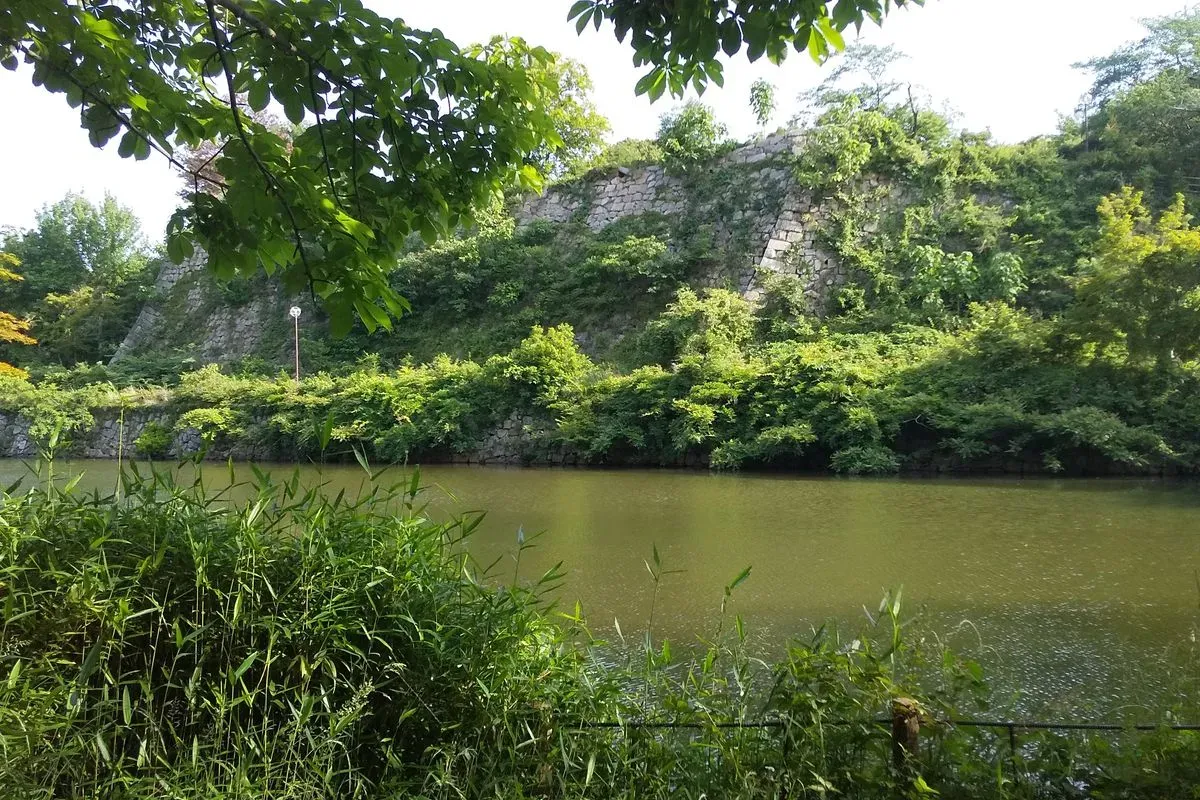
Akashi Castle is designated as one of Japan's Top 100 Castles. Additionally, Akashi Park has been selected as one of Japan's Top 100 Urban Parks, one of the Top 100 Cherry Blossom Viewing Spots, and one of Japan's Top 100 Historical Parks. With its abundant trees, it seems like a perfect place for a short forest bath.

Fukuyama Castle (Japanese Castle No. 71) is a castle located in Fukuyama City, Hiroshima Prefecture. Katsunari Mizuno, a cousin of Tokugawa Ieyasu, entered the castle as the first feudal lord with 100,000 koku as a stronghold in the western region. It was the last large-scale early modern castle completed after the issuance of the "one castle per province" order in 1615. Although it had the form of a contour-style hirayama castle, it was also known as a coastal castle due to its double moats and... Show more

Fushimi Yagura. It is said to have been relocated from Fushimi Castle in Kyoto. During the dismantling and repair of Fukuyama Castle's Fushimi Yagura, evidence was found in the form of inscriptions indicating its origin from Fushimi Castle, and there are movements to register it as a national treasure.

JR Fukuyama Station. Originally, it was located within the Sannomaru grounds.

A steel plate affixed with "Reiwa's Major Renovation". Unlike the other three sides, only the north-facing wall appears black.

Tsukimi-yagura and its attached yagura.


Tsuwano Castle was built by the Yoshimi clan in the Kamakura period to monitor the Mongol invasions. Later, during the Oei Invasion, the Yoshimi clan rebelled against Sue Harukata and held out for over 100 days. After the Battle of Sekigahara, the Yoshimi clan, being under the control of the Mori clan, went to Hagi, and the Sakazaki clan took over the castle and reconstructed it to its current form. The Sakazaki clan was later involved in the Chihime Incident and was subsequently deprived of the... Show more



Hiroshima Castle (one of Japan's Top 100 Castles, No. 73) is a castle located in Hiroshima, Hiroshima Prefecture. It was built when the Mori clan, who had their base in Yoshida Koriyama Castle, moved to this area. Hiroshima Castle was built on the delta of the Ota River, surrounded by natural fortifications. It was constructed based on the layout influenced by Toyotomi Hideyoshi's Jurakudai, and it took 10 years to build. There used to be a small tower connected by a corridor. The inner citadel... Show more

天守からの景色



Wakayama Castle (Japanese 100 Famous Castles No. 62) is a castle located in Wakayama City, Wakayama Prefecture. Wakayama Castle is best known as the residence of the Tokugawa Mitsuke 'Kishu Tokugawa family'. The castle seen today was renovated and built when Tokugawa Yorinobu, the tenth son of Tokugawa Ieyasu, was given Kishu's blood during the Edo period. It is said that before that, during the Warring States period, Hidechika, the younger brother of Toyotomi Hideyoshi, began building a castle... Show more

天守からの眺望




Uwajima Castle (Japanese Top 100 Castles No. 80) is a castle located in Matsuyama City, Ehime Prefecture. Originally, it was the residence of the Kono clan, the governor of Iyo, since the Kamakura period, but it fell during Oda Nobunaga's conquest of Shikoku in the Warring States period. The then lord of the castle, Kono Michinao, was pardoned but died two years later. Afterward, the castle was abandoned, and its materials were used in the construction of Iyo Matsuyama Castle. It is now maintain... Show more

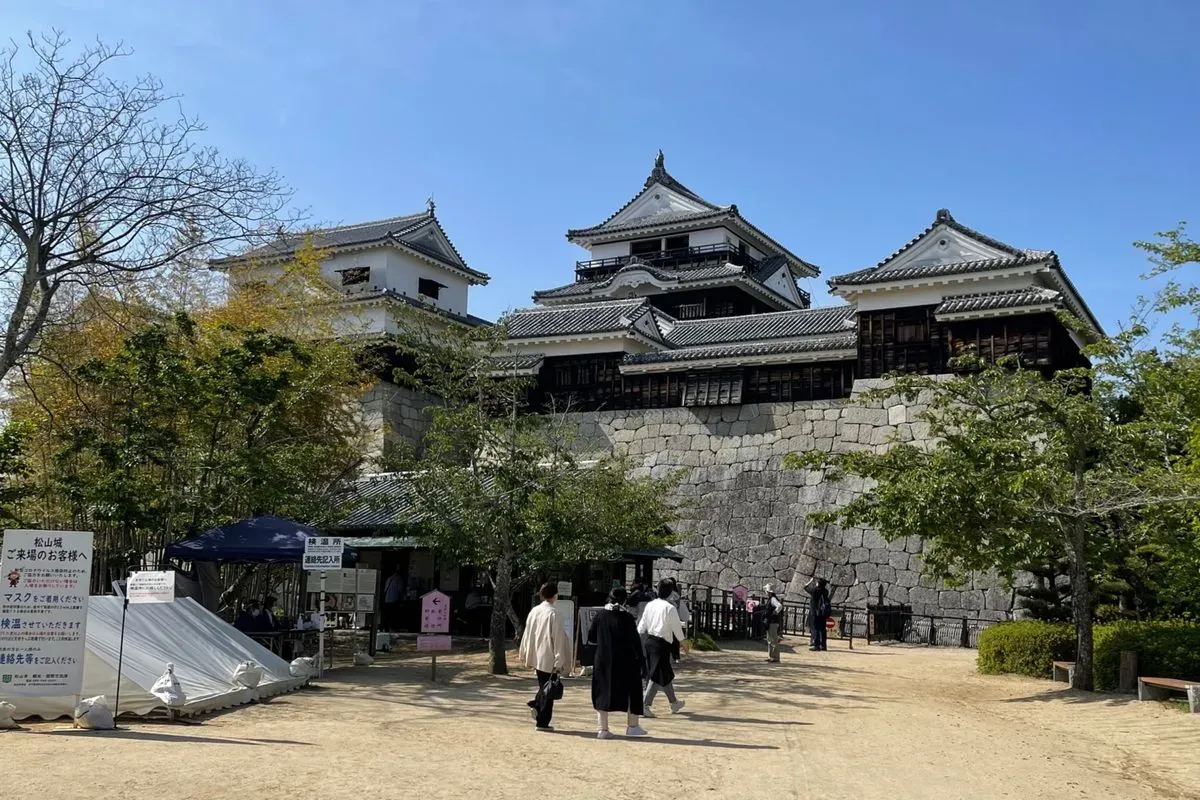

Matsuyama Castle (one of Japan's Top 100 Castles, No. 81) is a castle located in Matsuyama City, Ehime Prefecture. The main tower is one of the 12 remaining original towers and is the newest among them. It is also known as Kameyama Castle. Matsuyama Castle's history dates back to 1602 when Katō Yoshiaki, who ruled Iyo Province, was rewarded with an additional 200,000 koku of rice for his achievements in the Battle of Sekigahara. Due to the cramped space of the previous residence, Masaki Castle,... Show more

Saga Castle is the symbol of Saga City, the site of Nabeshima's 360,000-goku castle. Saga Castle was originally built by Naoshige Nabeshima, Katsushige and their son, Naoshige and Katsushige, to extend and improve the Muranaka Castle of the Ryuzoji clan that ruled Saga, and was completed in 1611. Saga Castle was built on a flatland, with the main circle measuring 70 ken (about 126 m) east to west and 68 ken (about 122 m) north to south, and a four-story, five-story castle tower in the northweste... Show more



Uwajima Castle (one of Japan's Top 100 Castles, No. 83) is a castle located in Uwajima City, Ehime Prefecture. It is one of the surviving towers. The original castle was called Itajima Marugushi Castle, and it was not until the time of Date Masamune's eldest son, Date Hidemune, who was appointed during the Edo period, that it came to be called 'Uwajima Castle.' Uwajima Castle dates back to ancient times, tracing back to the Heian period. The first tower was built during the construction of the c... Show more

This is the smoke exhaust window seen from inside the keep.

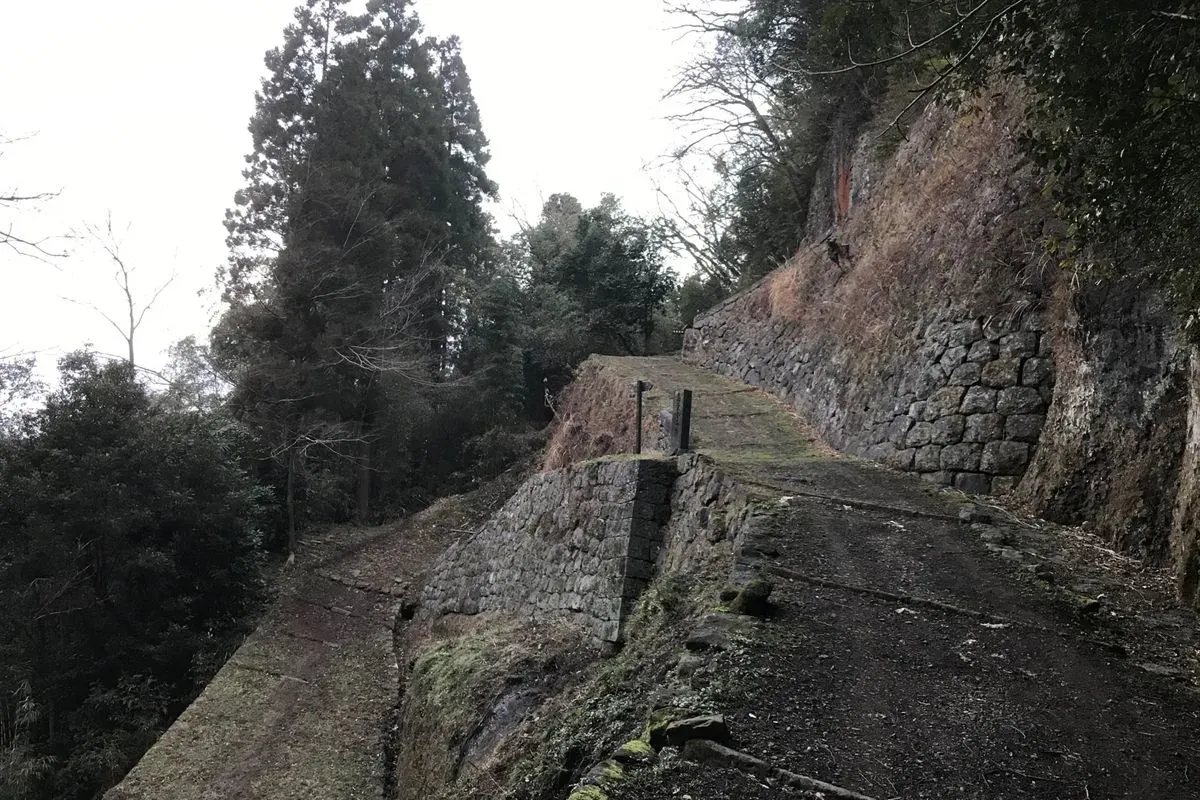

Ruins of a castle located in Bungotakada City, Oita Prefecture. Hidenaga Nakagawa, the second son of Kiyohide Nakagawa, who died in the Battle of Segikaga, shaped the current castle. There is also a legend that it was originally created to shelter Minamoto no Yoshitsune from Minamoto no Yoritomo. The strength of the fortification becomes apparent when you climb the castle. Shiga Chikatsugu, the previous lord of the castle, repelled the Shimazu army, which aimed to conquer Kyushu, at this Okajo.... Show more


It is one of the three most famous castles in Japan. Also known as Ginko Castle, it was built by the famous general Kiyomasa Kato over a period of about seven years from 1601 (Keicho 6). It is a vast castle with a perimeter of 5.3 km and a total area of 98 ha. It has 3 towers, 49 turrets, 18 turret gates, and 29 castle gates, and utilizes unique construction techniques that make use of stone walls and natural terrain. In 1877, the castle was besieged for more than 50 days during the Southwest Ja... Show more

Known as a representative tourist destination of Hyogo Prefecture and registered as Japan's first World Cultural Heritage, Himeji Castle, also known as Shirasagi Castle, is famous for its large and white main tower. The construction of such a main tower occurred when Kodera Terumasa became the lord of the castle after the Battle of Sekigahara in 1600, and a major reconstruction was carried out. The main tower underwent significant repair work from 2009 to 2015, enhancing its beauty. Himeji Castl... Show more

100 Famous Castles in Japan Excavation site of Sunpu Castle's main tower base A valuable excavation site where you can see the authentic main tower bases from two periods: Tensho period (Sengoku era) and Keicho period (Edo era). The inside of the stone walls, including techniques like 'nomotezumi', 'uchikomi-zume', 'kirikomi-zume', 'sangitsumi', and 'ura-komi' are clearly visible. The northern stone wall of the Keicho period main tower base is a rare 'Keicho period original' stone wall in the... Show more

Fukuoka Castle (Japanese Top 100 Castles No. 85) is a castle located in Fukuoka City, Fukuoka Prefecture. After the Battle of Sekigahara, Kuroda Nagamasa, who was transferred from Buzen Province, was given this land and built the castle. Construction began in 1601 and was completed in 1607. Although it is now reclaimed land, it was originally a castle in the sea. The area, which is now Ohori Park, was originally a sea, so there is also a project to restore the Tide-Viewing Turret. The foundation... Show more

In spring 2024, a temporary building resembling a castle tower was constructed

Tamon Yagura is still in existence and has been designated as an important cultural property. It was used as a warehouse at that time.

Shimo-no-hashi Goten. At that time, it was a highly formal gate used for the lord's comings and goings and official events.

Cherry blossoms are also illuminated during the season